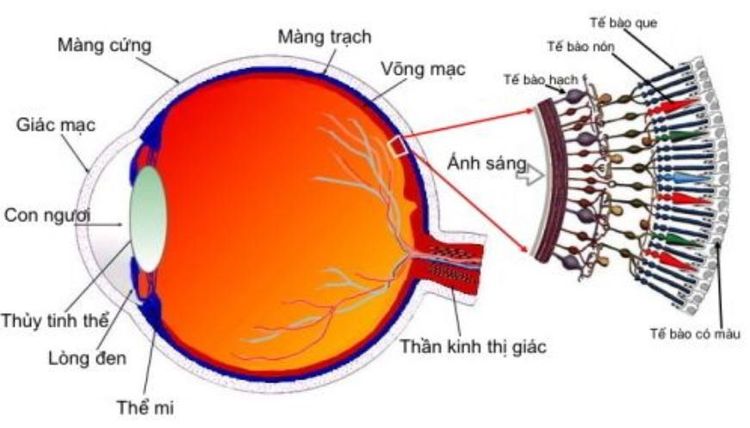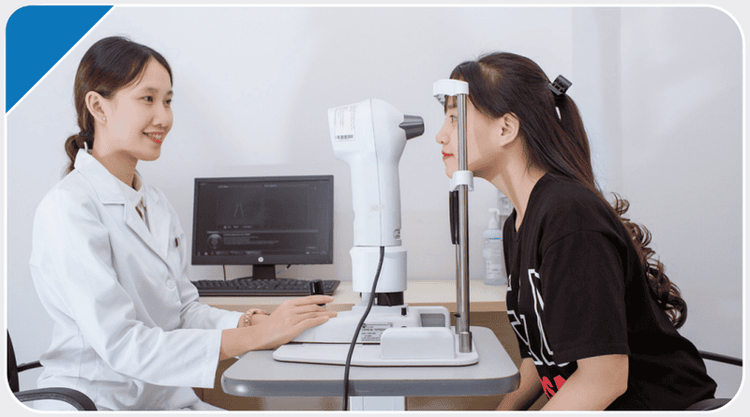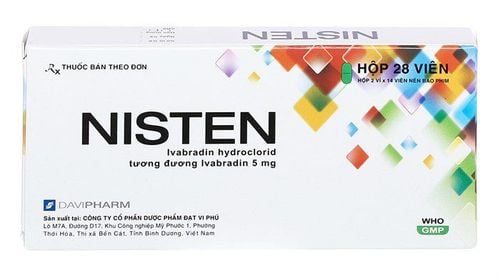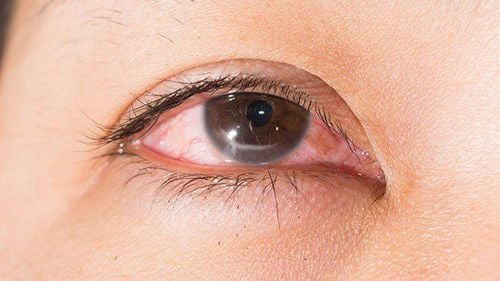This is an automatically translated article.
The article was professionally consulted by an eye doctor - Department of Medical Examination & Internal Medicine - Vinmec Hai Phong International General Hospital.Retinitis pigmentosa is a rare disease, the prevalence in the community is about 0.02-0.03% of the population. The cause of the disease is unknown, but experts believe it is related to genetic mutations.
1. What is retinitis pigmentosa?
The retina is the innermost layer of the eyeball. The retina is made up of many layers of cells (optic nerve cell layer - pigment epithelium - choroidal layer) The retina contains special cells, called rods and cones. These two cells sense light and send images to the brain.Long rod cells are very sensitive to light, they allow us to see objects in low light conditions, helping to see further. Cones, on the other hand, require a lot of light, but allow us to perceive very small details of what we are looking at, ensure focus on a single point, and help distinguish different colors. The second type of cells is concentrated in one place, which determines the clarity of vision.
Retinitis pigmentosa also known as night blindness is a collection of diseases that affect the retina. Retinitis pigmentosa often destroys rod cells in the retina, causing gradual loss of vision, which can eventually lead to blindness. Characteristics of the disease, manifestations of retinal pigment epithelium can be from birth or at a later stage. Gradual degeneration of the rod cells causes the visual field of the eye to narrow. This is followed by degeneration of the cones leading to severe vision loss.

Trên võng mạc chứa các tế bào que và tế bào nón
2. Causes of retinitis pigmentosa
The cause is currently unknown, but some experts believe that most retinitis pigmentosa is related to genetic abnormalities, the disease depends on the degree of gene mutation, how the disease is inherited. have varying degrees of severity and rate of progression.Genetic mutation can be inherited from one parent, or both parents, in which recessive factors account for about 60-70%, and dominant genes are about 25%, the rest is inherited on infection. X-chromosome. If one parent has retinitis pigmentosa, the risk is higher.
3. Symptoms of retinitis pigmentosa
Common symptoms of retinitis pigmentosa usually first appear during childhood. New symptoms often appear not yet severe, severe signs will appear in adulthood. Possible symptoms include:Reduced vision at night or in places with low light conditions. Narrowing of the visual field means loss of peripheral vision: Patients will feel like they are looking in a tunnel (called tubular vision) and often slip. Eyes with peripheral vision in severe cases lose both central and peripheral vision. The disease develops differently in each person, and the symptoms also depend on the stage of the disease. To detect the disease early, it can be based on symptoms according to stages such as:
Mild stage: Mainly, patients find it difficult to see in low light conditions, lose peripheral vision, feel the color of dark objects. and paler. Severe stage: Total loss of night vision, loss of both central and peripheral vision (ie, objects at the edges and middle are not clearly visible). Unable to distinguish between colors, objects can only be seen in black and white. Worse, the patient can't see anything at all.

Một số người bệnh có thể bị mất tầm nhìn ở trung tâm
4. How to cure retinitis pigmentosa?
There is currently no proven effective therapy for retinitis pigmentosa. Some studies show that the following methods can help slow the progression of the disease:Research shows that taking an appropriate dose of vitamin A can slow the progression of the disease, thereby may delay blindness for up to 10 years in some patients during certain stages of the disease. However, vitamin A supplementation should be guided and prescribed by a doctor. Use supporting tools: Including magnifying glasses and infrared binoculars at night to help patients see better. Especially people with tubular vision, vision is greatly reduced in low light conditions. Wearing sunglasses during the day helps protect the retina from ultraviolet rays, so it can help preserve vision. Regular periodic check-ups to accurately assess the condition of the disease, thereby recommending appropriate methods. In addition to early detection and treatment of accompanying diseases such as refractive errors, cataracts, glaucoma ... avoid the risk of early vision loss. In addition, scientists have studied a number of possible treatments related to retinal transplants, artificial retinal transplants, gene therapy that have been performed and found to be effective in treating the condition. However, it is not yet popular and the cost is quite high.

Khi thấy mắt có biểu hiện bất thường, người bệnh nên đến gặp bác sĩ để được thăm khám và điều trị kịp thời
5. How to prevent retinitis pigmentosa?
Because the etiology is unknown and involves genetic factors, the disease cannot be prevented, but there are changes to help prevent the disease from getting worse, such as:Avoid staying up late, looking at your phone or computer in poor conditions. lack of light, avoid work pressure or psychological stress. Limit stimulants such as alcohol, tobacco... Have a reasonable rest and relaxation regime, exercise regularly. It is a hereditary disease, so when there is a family history of the disease. Should go to the doctor and screen for retinitis pigmentosa can detect the risk of disease early. If the disease is detected at an early stage, reasonable adjustment will help the disease progress more slowly, thereby reducing early blindness. As soon as signs of family disease are detected, the patient should be taken to reputable medical facilities for examination and treatment.
Please dial HOTLINE for more information or register for an appointment HERE. Download MyVinmec app to make appointments faster and to manage your bookings easily.













